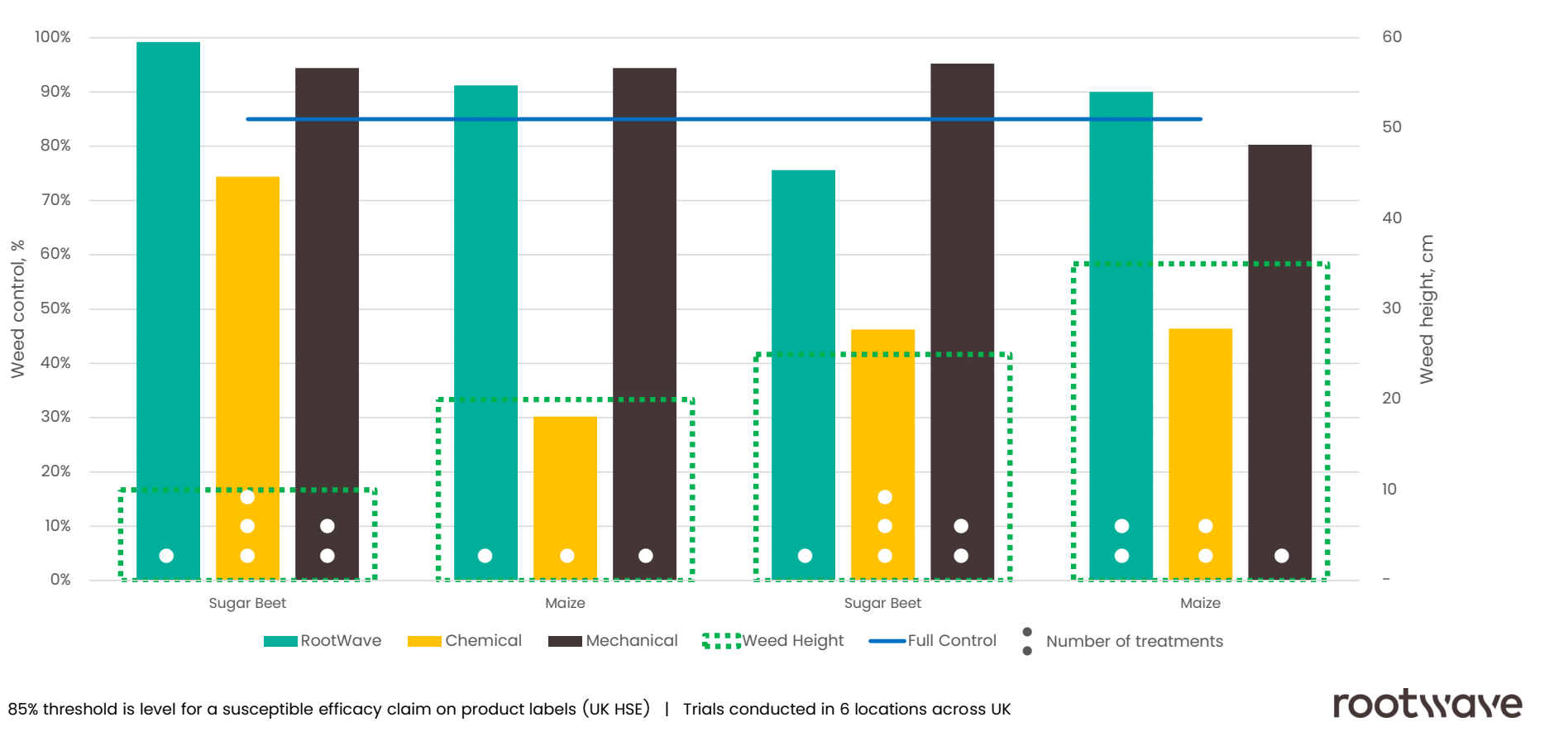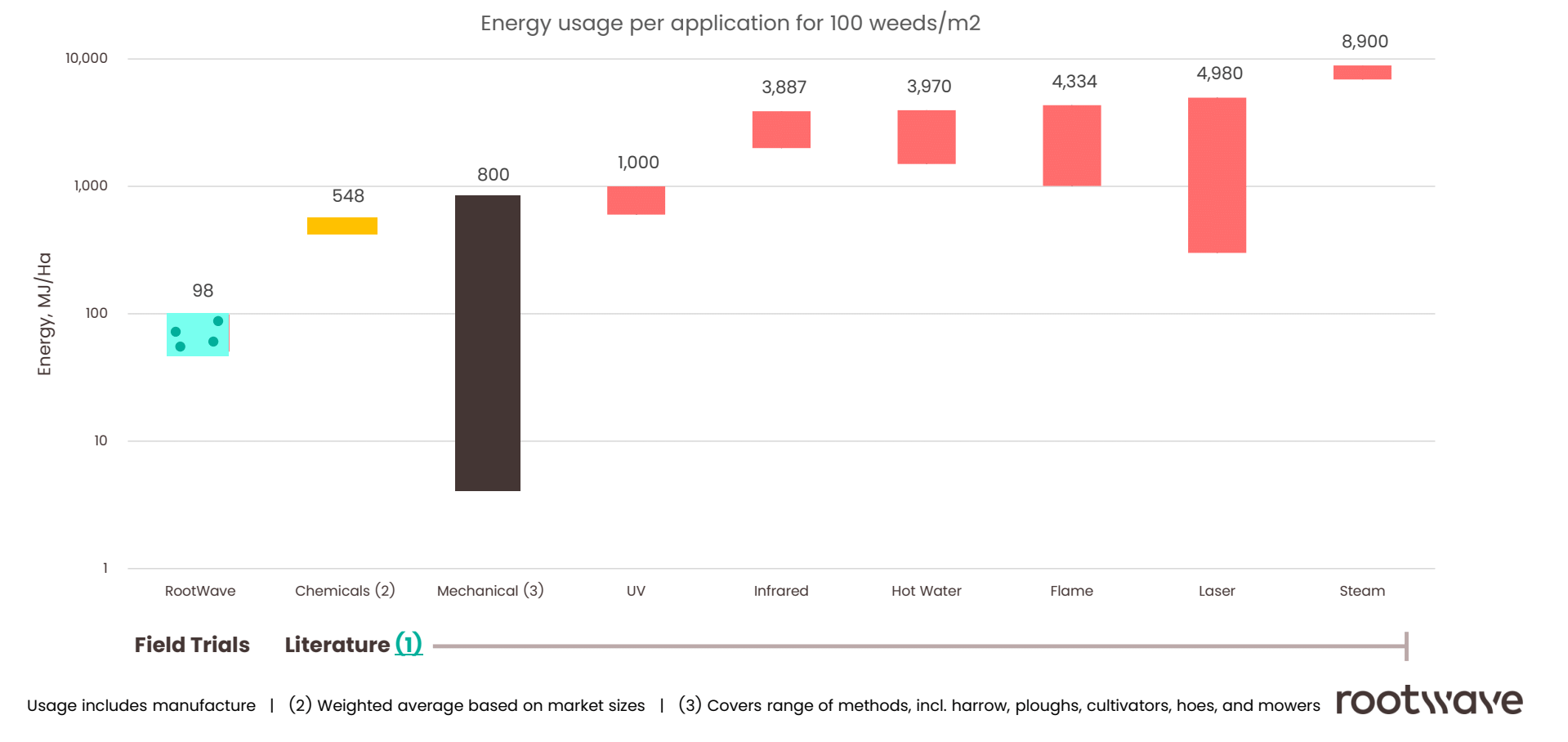Independent trials of British manufacturer RootWave’s tractor-mounted Volta machine in maize and sugar beet crops have shown that the system provides full control of weeds, according to a company press release.
The company’s own tests show that their patented high-frequency weed control uses just a fifth of the energy of herbicides, on a per hectare basis.
The Warwickshire, UK-based weed control company plan to release a commercial version of Volta in the UK and Europe for fruit crops and broad acre row crops in the coming years.
“We have a system that can provide low-cost weed control that helps nature restore biodiversity,” says CEO Andrew Diprose. “Electricity provides full control of weeds by boiling them from the root upwards.”
The trials of RootWave Volta were conducted in commercial maize and sugar beet crops in Warwickshire and Norfolk in summer 2022 The machine delivered up to 100% control, averaged 99% control across one sugar beet trial site, and outperformed herbicides in all cases.

In equivalent herbicides trials, products must deliver 85% control to be able to claim weeds as ‘susceptible’ on the label. In all trials over the summer Volta beat the level of herbicides, and in one case by over 60%.
RootWave’s Volta machine is powered by a traditional diesel tractor, with the generator running from the front PTO. The technology is also compatible with green energy sources and autonomous systems, such as driverless tractors and carbon-free fuels.
In the company’s own tests, effective weed control was delivered from just 50 megajoules (MJ) of energy per hectare (recorded range 50-98Mj/Ha) – by comparison herbicides use over 500Mj/Ha, when taking into account the production and distribution of the chemicals. Other alternative weed control methods range from 800Mj/Ha to over 8,000.
 The company has patented the use of high frequency electricity at over 18 kilohertz (kHz) for weed control on the grounds that it is fundamentally safer than DC or standard 50 hertz (Hz).
The company has patented the use of high frequency electricity at over 18 kilohertz (kHz) for weed control on the grounds that it is fundamentally safer than DC or standard 50 hertz (Hz).







Post a comment
Report Abusive Comment